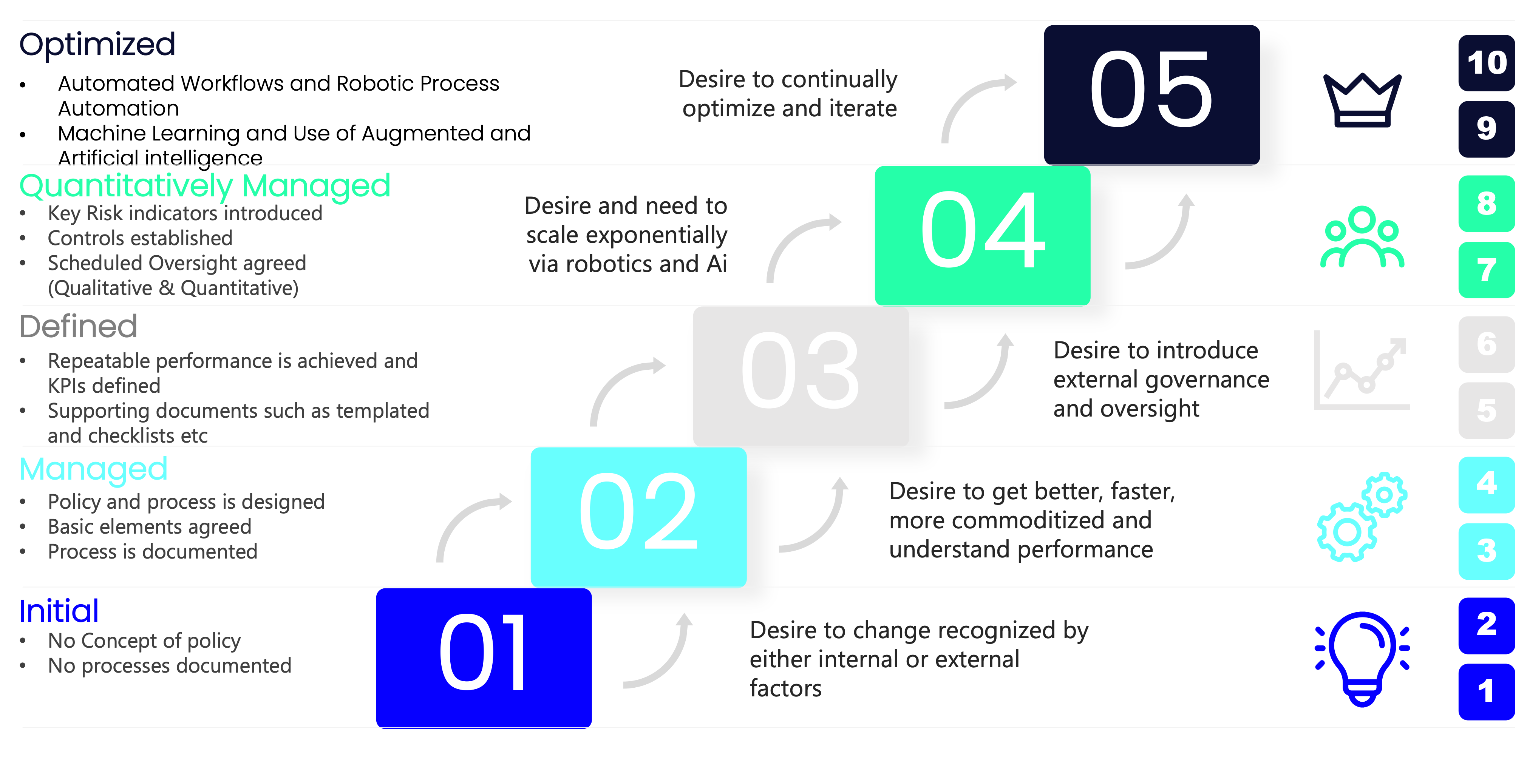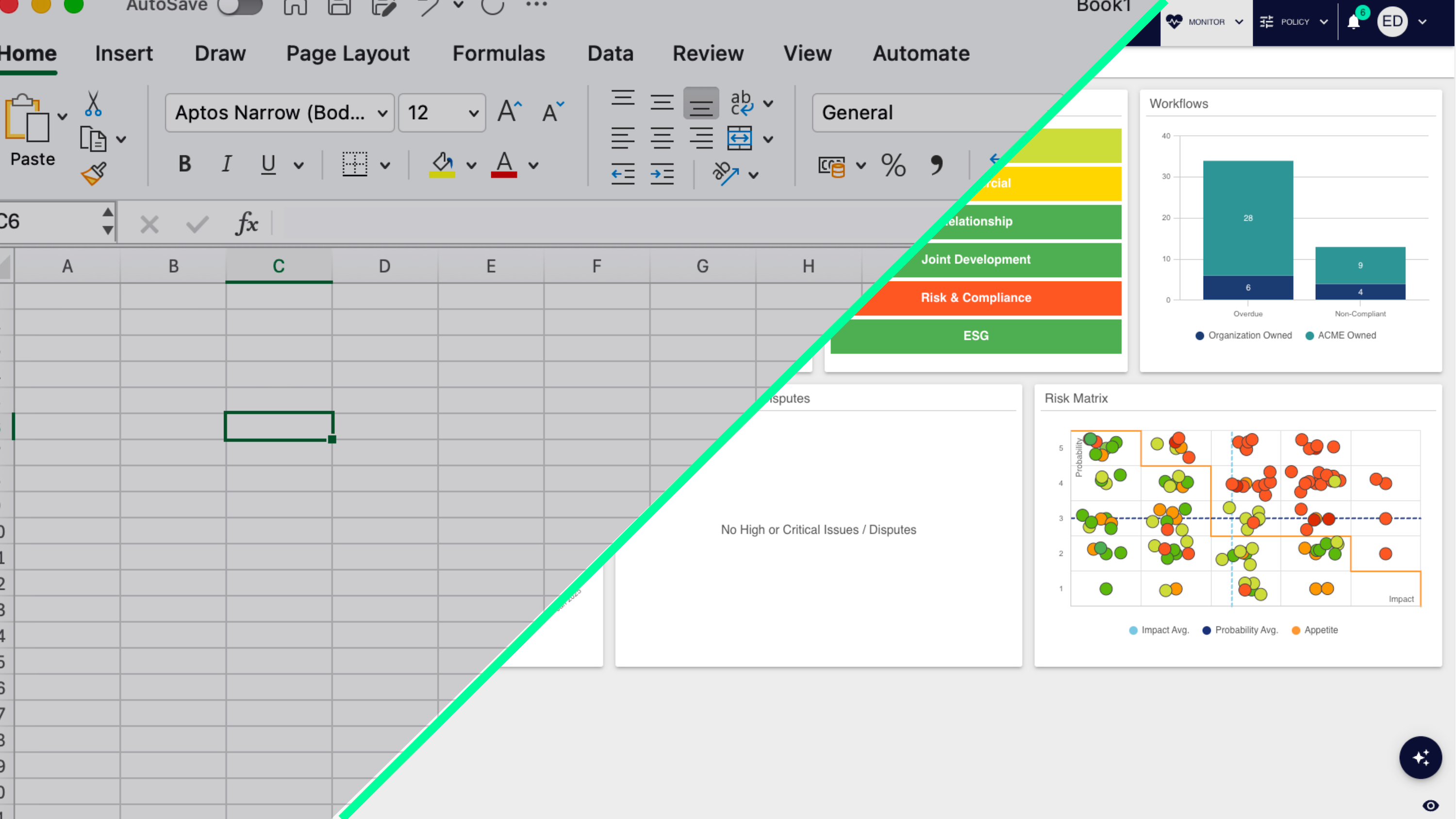What is CMMI?
The Capability Maturity Model Integration (CMMI) is a model created from global best practices to benchmark key capabilities, to drive company performance.
The model was originally created for the US Department of Defence to assess software contractors. It has since expanded to help businesses build and measure capabilities, such as TPRM, and overall improve business performance. The approach allows organisations to understand their current level of capability, and what they need to do to excel whilst aligning to company goals.
The CMMI can be applied to any operation, including third-party risk management.
TPRM Policy Maturity Assessment
Policy, Procedure and Process are the three fundamental elements of a robust risk management framework.
A policy provides high-level guidance on the governance for third-party risk, highlighting the approach, key responsibilities and expected outcomes. This is typically broad in scope and can be broken down by procedures and processes.
How can you access the maturity and relevance of a policy? By drawing parallels from the CMMI approach, this blog explores the five stages of policy maturity and their significance in TPRM.

Maturity Assessment Stages
Stage 1: Initial
At the initial stage, Organisations lack a documented policy or process for TPRM. This stage signifies a need for direction and recognition of the importance of establishing TPRM policies.
Stage 2: Managed
Transitioning from the initial stage, Organisations reach the managed stage when they develop basic policies and processes agreed upon by management. This stage marks the beginning of a documented and repeatable process for TPRM.
Stage 3: Defined
In the defined stage, Organisations aim for improved performance and efficiency. They establish metrics and KPIs to measure TPRM effectiveness alongside granular supporting documents and templates for operational processes.
Stage 4: Quantitatively Managed
To advance from the defined stage, Organisations introduce external governance and oversight, often through regulatory bodies. Key risk indicators (KRIs) are introduced to identify potential risks, and controls are established to mitigate these risks. Scheduled oversight ensures policy adherence.
Stage 5: Optimised
At the pinnacle of policy maturity, businesses reach the optimised stage. Here, high levels of automation, robotics, and AI are employed to enhance TPRM capabilities. Predictive analytics and machine learning enable Organisations to anticipate and address future risks effectively.
Conclusion:
Understanding policy maturity is essential for Organisations seeking to enhance their TPRM capabilities. By progressing through the stages of policy maturity, Organisations can strengthen their risk management practices, ensuring resilience in the face of evolving threats and regulatory requirements.
Download our TPRM Whitepaper
For an in-depth exploration of Third-Party Risk Management, download our comprehensive whitepaper. It covers the necessity, key components, and actionable steps for implementing robust TPRM frameworks. Learn how to align strategies with corporate objectives, establish effective governance, and mitigate risks to ensure long-term success.


